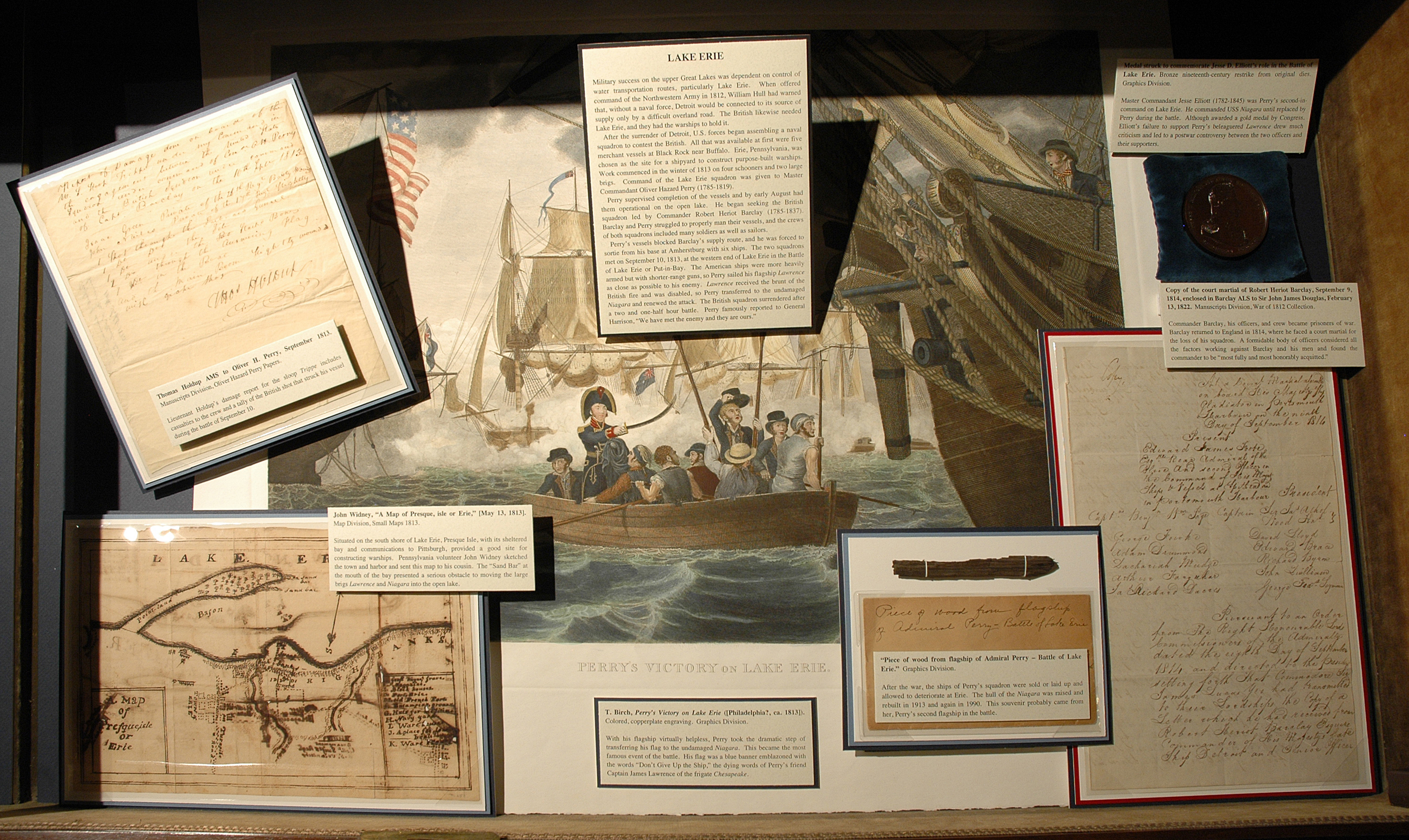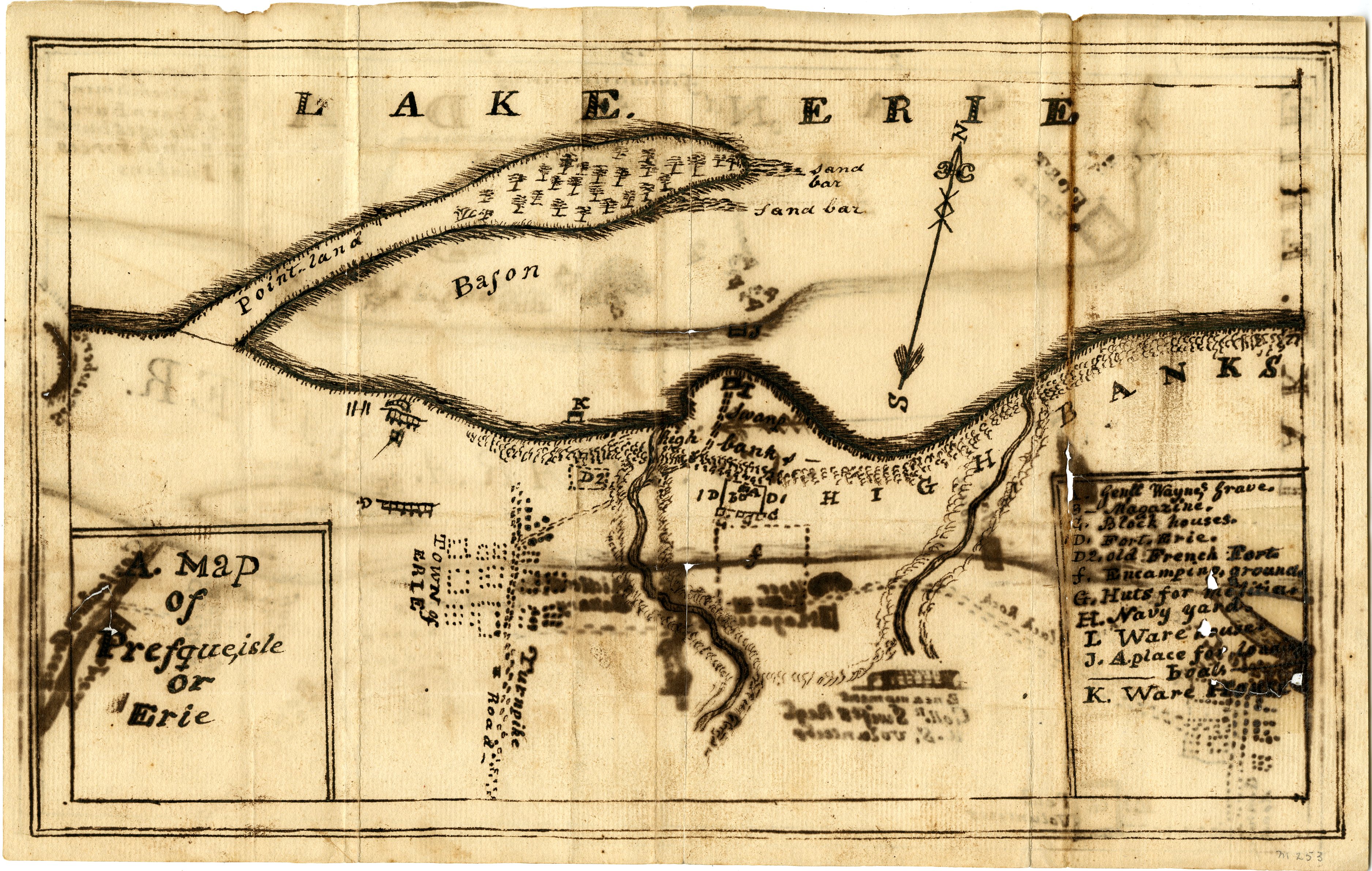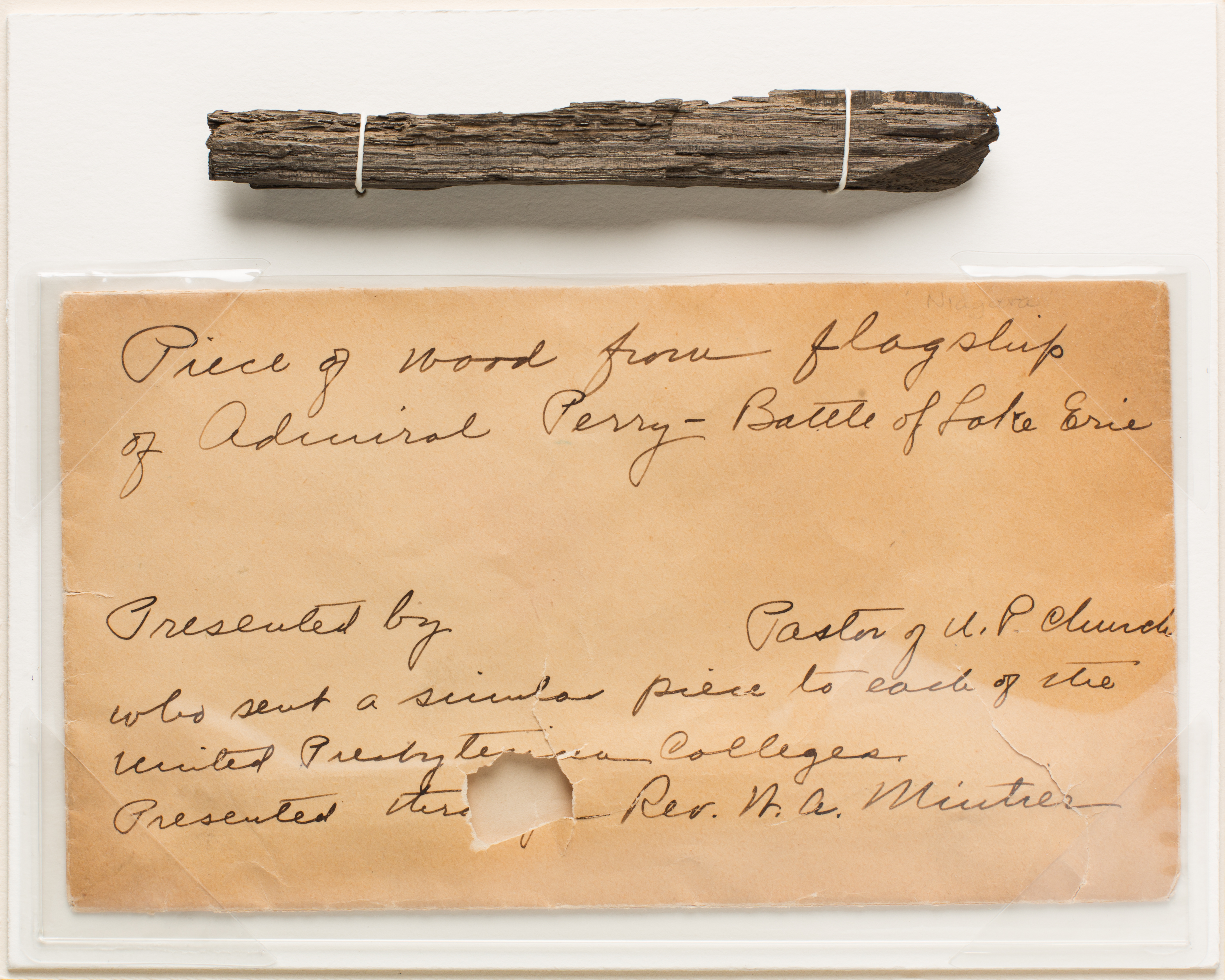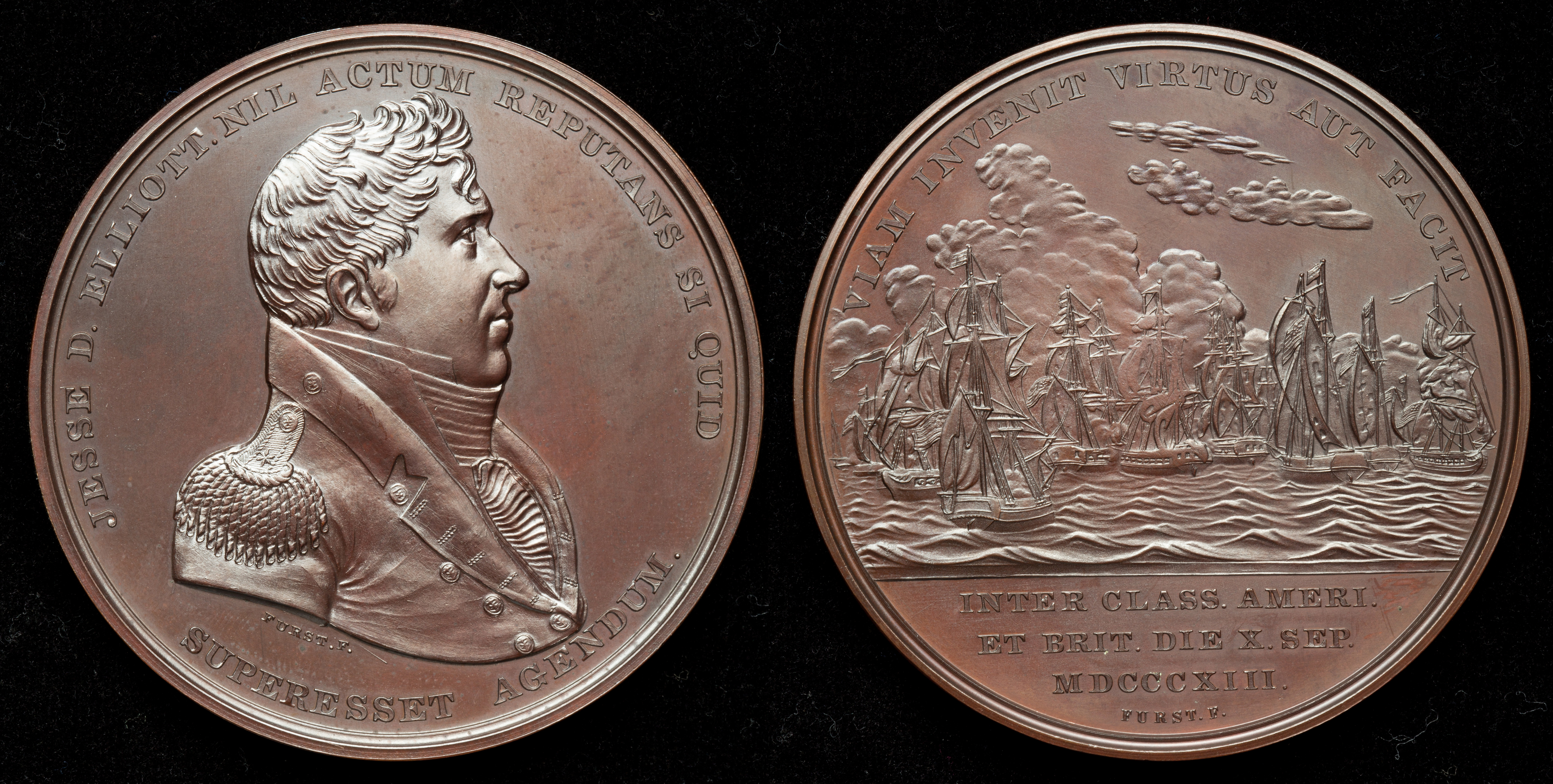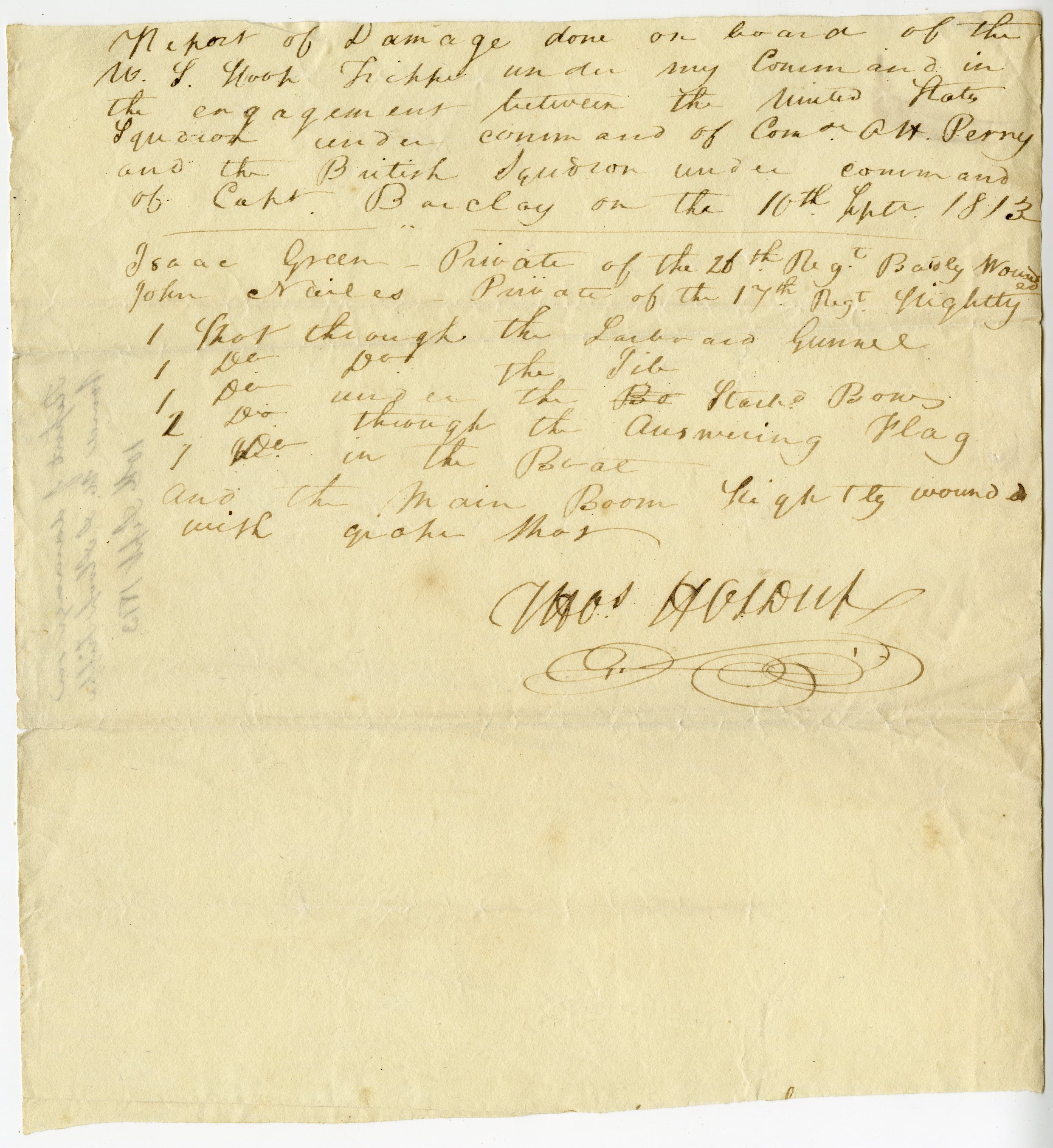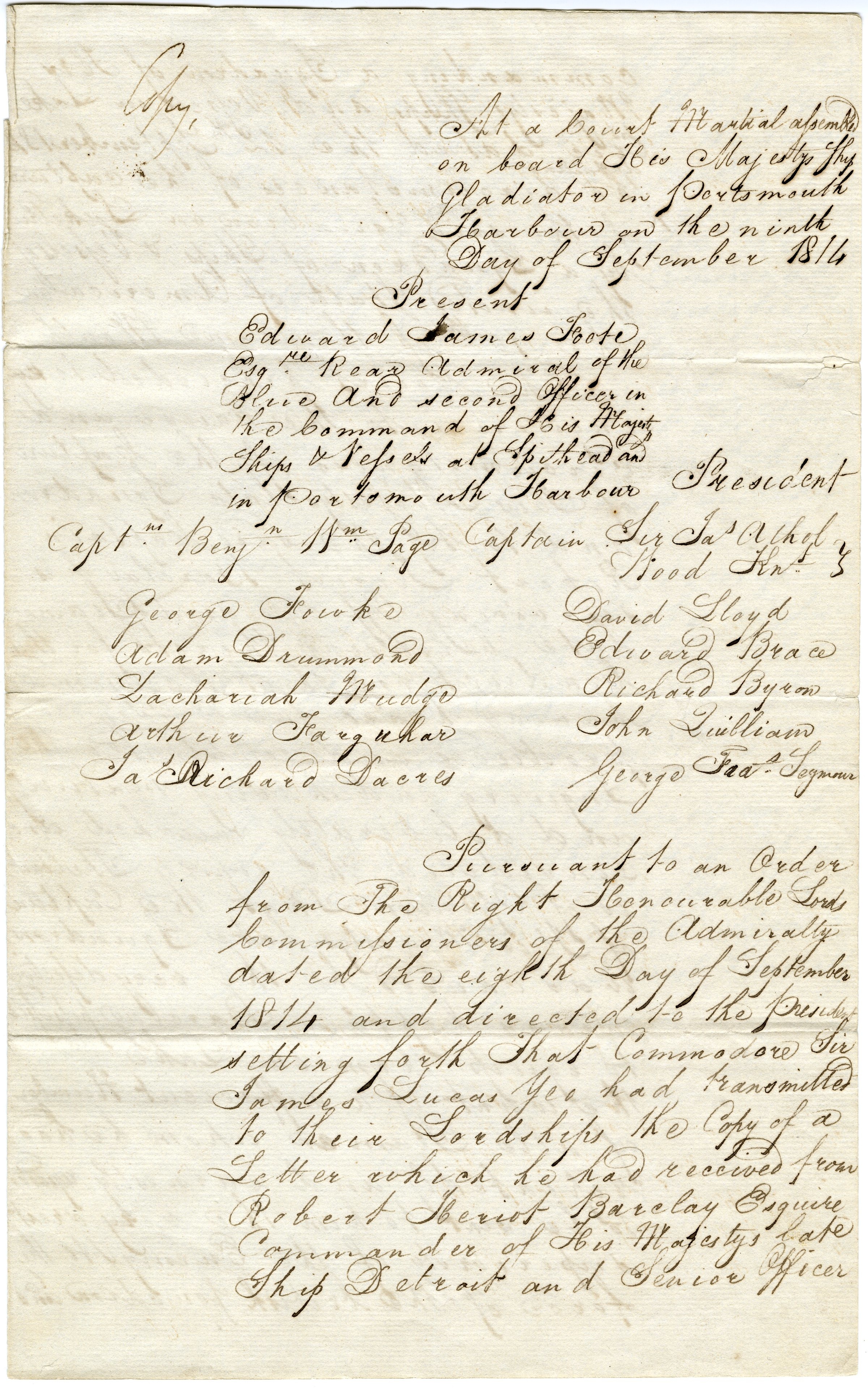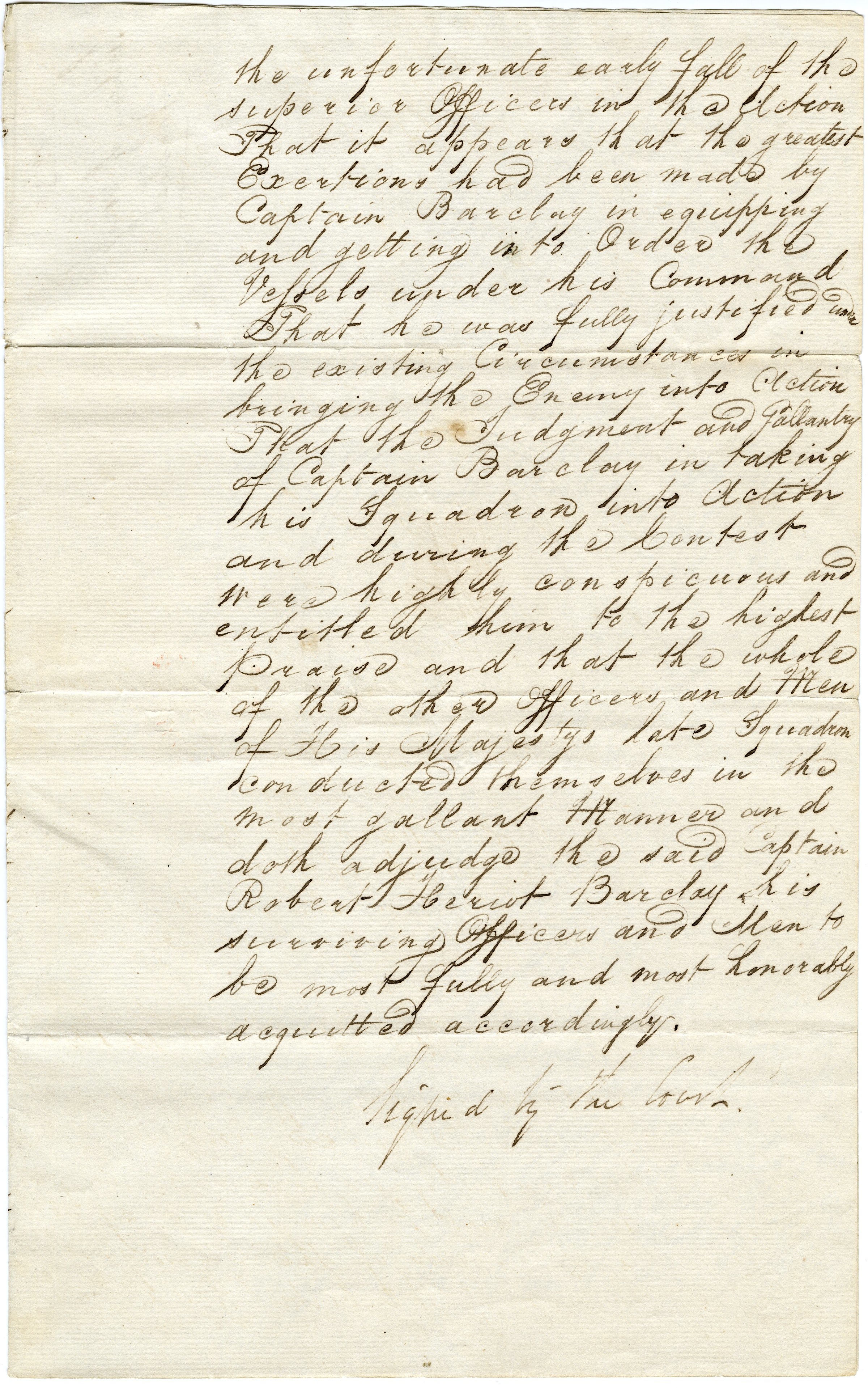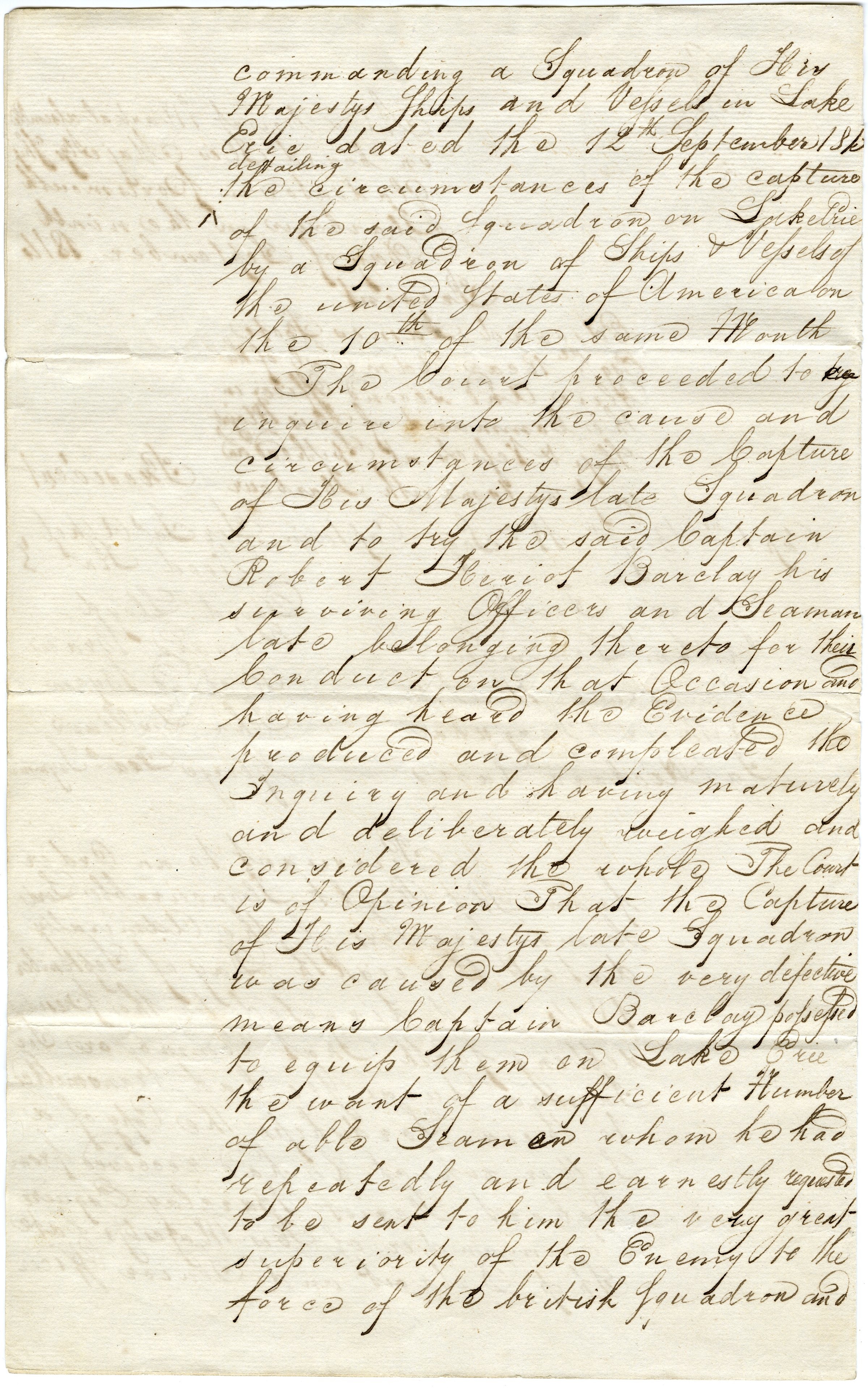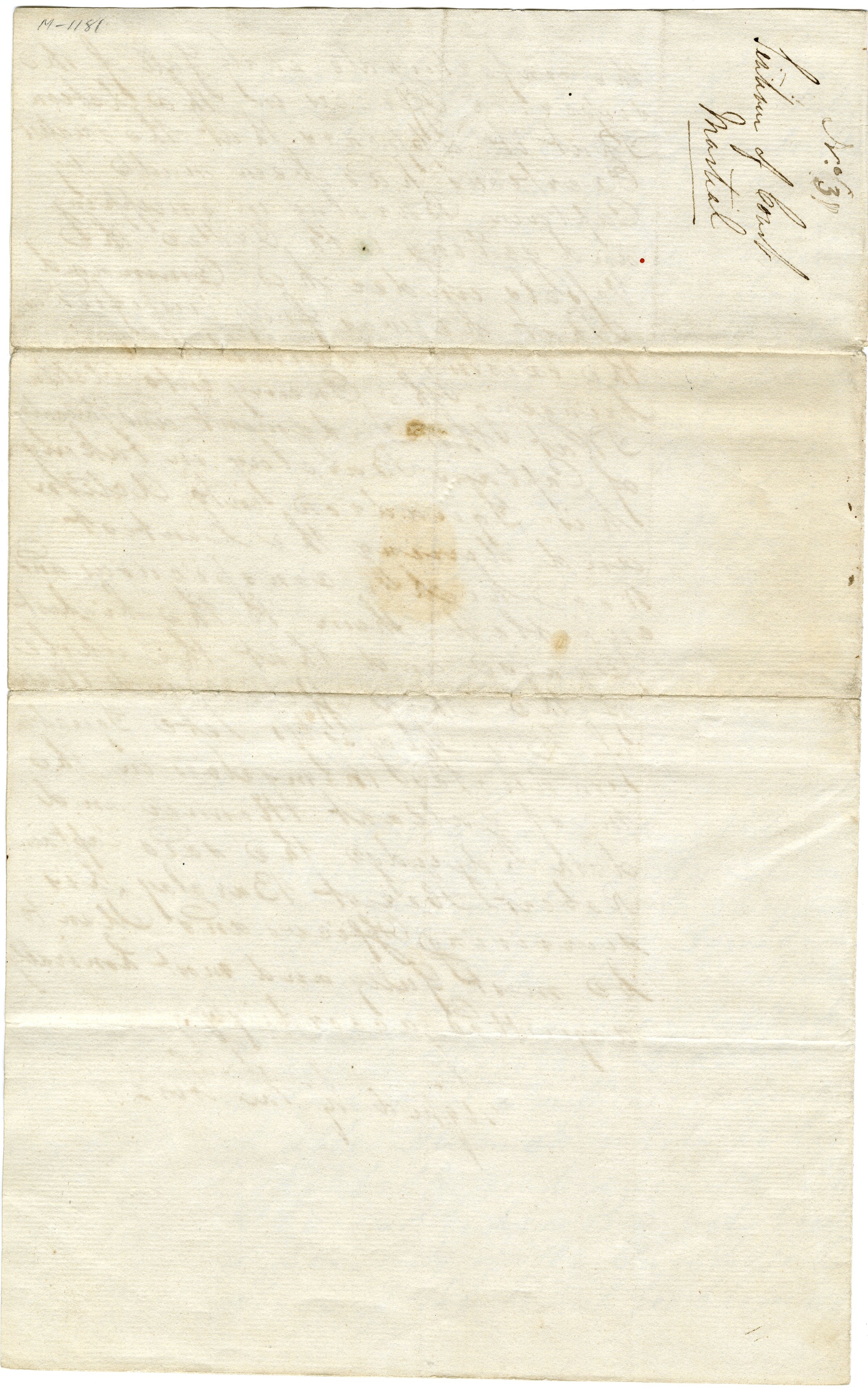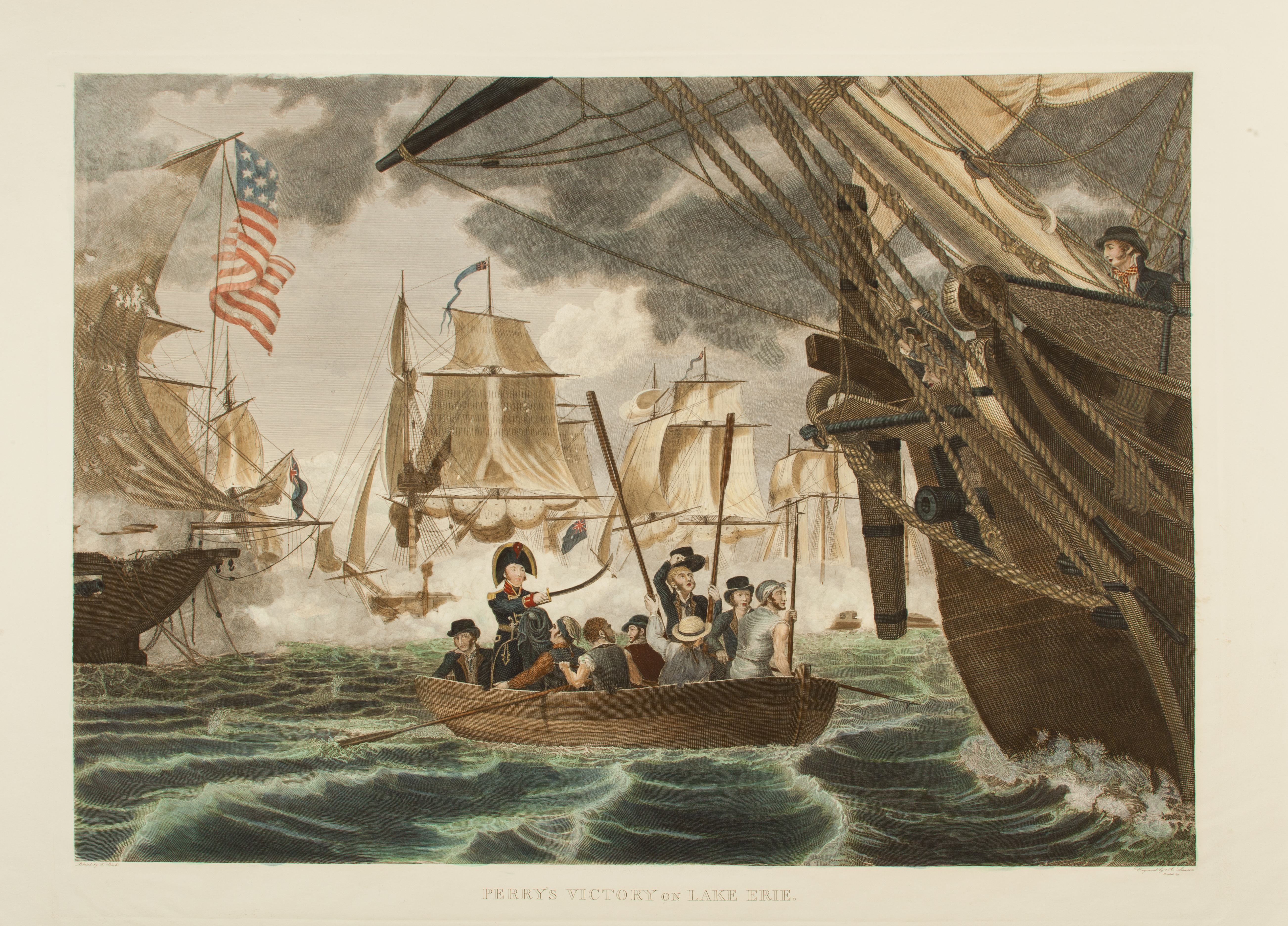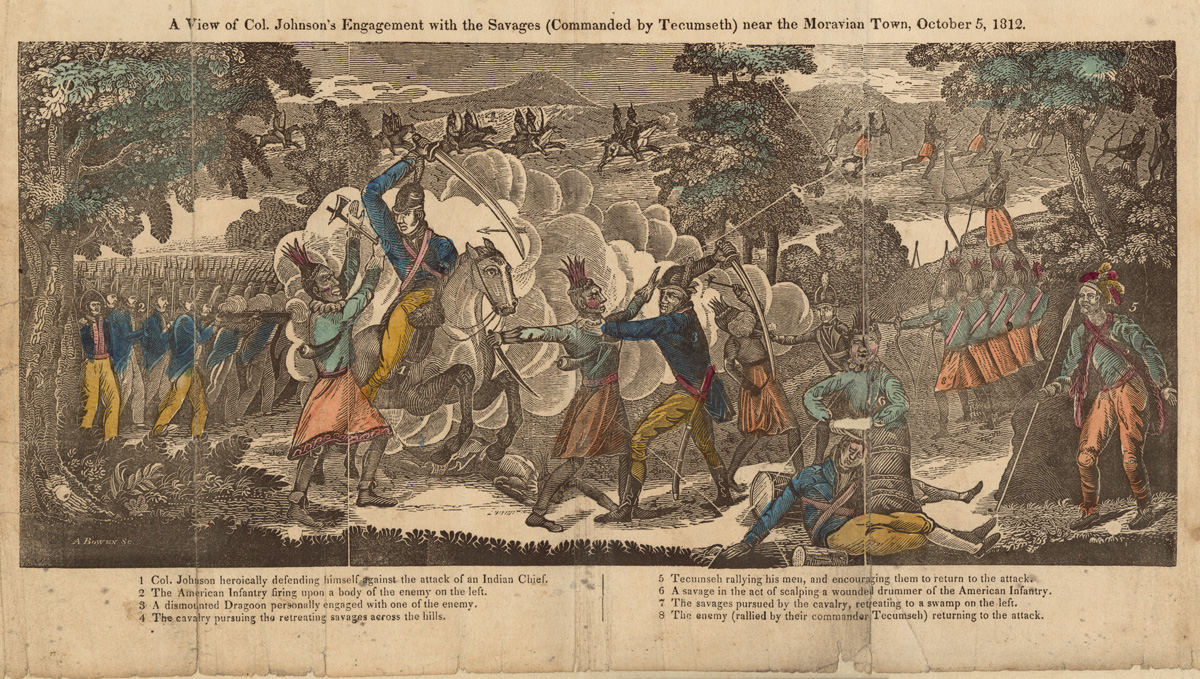The War of 1812: A Bicentennial Exhibition, Case 8
Case 8: Lake Erie
Military success on the upper Great Lakes was dependent on control of water transportation routes, particularly Lake Erie. When offered command of the Northwestern Army in 1812, William Hull had warned that, without a naval force, Detroit would be connected to its source of supply only by a difficult overland road. The British likewise needed Lake Erie, and they had the warships to hold it.
After the surrender of Detroit, U.S. forces began assembling a naval squadron to contest the British. All that was available at first were five merchant vessels at Black Rock near Buffalo. Erie, Pennsylvania, was chosen as the site for a shipyard to construct purpose-built warships. Work commenced in the winter of 1813 on four schooners and two large brigs. Command of the Lake Erie squadron was given to Master Commandant Oliver Hazard Perry (1785-1819).
Perry supervised completion of the vessels and by early August had them operational on the open lake. He began seeking the British squadron led by Commander Robert Heriot Barclay (1785-1837). Barclay and Perry struggled to properly man their vessels, and the crews of both squadrons included many soldiers as well as sailors.
Perry’s vessels blocked Barclay’s supply route, and he was forced to sortie from his base at Amherstburg with six ships. The two squadrons met on September 10, 1813, at the western end of Lake Erie in the Battle of Lake Erie or Put-in-Bay. The American ships were more heavily armed but with shorter-range guns, so Perry sailed his flagship Lawrence as close as possible to his enemy. Lawrence received the brunt of the British fire and was disabled, so Perry transferred to the undamaged Niagara and renewed the attack. The British squadron surrendered after a two and one-half hour battle. Perry famously reported to General Harrison, “We have met the enemy and they are ours.”
John Widney, “A Map of Presque, isle or Erie,” [May 13, 1813]. Map Division, Small Maps 1813.
Situated on the south shore of Lake Erie, Presque Isle, with its sheltered bay and communications to Pittsburgh, provided a good site for constructing warships. Pennsylvania volunteer John Widney sketched the town and harbor and sent this map to his cousin. The “Sand Bar” at the mouth of the bay presented a serious obstacle to moving the large brigs Lawrence and Niagara into the open lake.
“Piece of wood from flagship of Admiral Perry – Battle of Lake Erie.” Graphics Division.
After the war, the ships of Perry’s squadron were sold or laid up and allowed to deteriorate at Erie. The hull of the Niagara was raised and rebuilt in 1913 and again in 1990. This souvenir probably came from her, Perry’s second flagship in the battle.
Medal struck to commemorate Jesse D. Elliott’s role in the Battle of Lake Erie. Bronze nineteenth-century restrike from original dies. Graphics Division.
Master Commandant Jesse Elliott (1782-1845) was Perry’s second-in-command on Lake Erie. He commanded USS Niagara until replaced by Perry during the battle. Although awarded a gold medal by Congress, Elliott’s failure to support Perry’s beleaguered Lawrencedrew much criticism and led to a postwar controversy between the two officers and their supporters.
Thomas Holdup AMS to Oliver H. Perry, September 1813. Manuscripts Division, Oliver Hazard Perry Papers.
Lieutenant Holdup’s damage report for the sloop Trippe includes casualties to the crew and a tally of the British shot that struck his vessel during the battle of September 10.
Copy of the court martial of Robert Heriot Barclay, September 9, 1814, enclosed in Barclay ALS to Sir John James Douglas, February 13, 1822. Manuscripts Division, War of 1812 Collection.
Commander Barclay, his officers, and crew became prisoners of war. Barclay returned to England in 1814, where he faced a court martial for the loss of his squadron. A formidable body of officers considered all the factors working against Barclay and his men and found the commander to be “most fully and most honorably acquitted.”
T. Birch, Perry’s Victory on Lake Erie ([Philadelphia?, ca. 1813]). Colored, copperplate engraving. Graphics Division.
With his flagship virtually helpless, Perry took the dramatic step of transferring his flag to the undamaged Niagara. This became the most famous event of the battle. His flag was a blue banner emblazoned with the words “Don’t Give Up the Ship,” the dying words of Perry’s friend Captain James Lawrence of the frigate Chesapeake.

